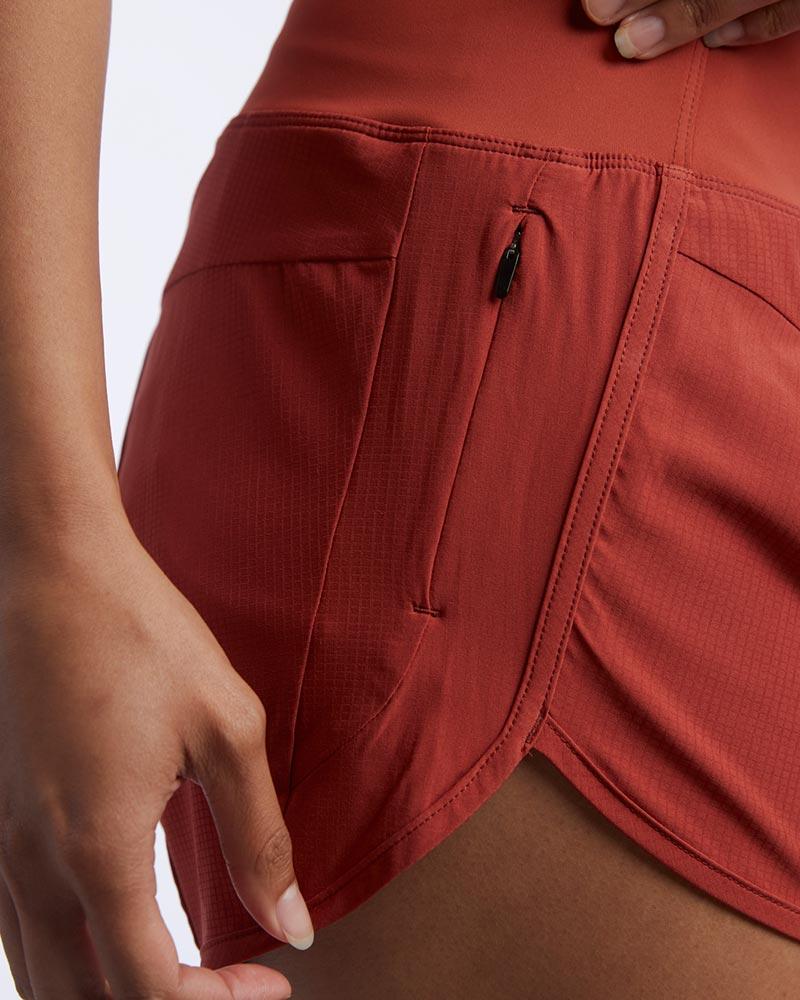How to Workout Your Forearms (15 Exercises + Tips For Women)
Forearm strength is an essential element of functional fitness. We use this part of our body for so many everyday tasks that exercising for stronger forearms could make daily life a little easier.
For example, forearm exercises can help prevent carpal tunnel for people who spend a lot of time on a computer or playing video games.
Whatever your aspirations may be, here’s a helpful beginners guide on how to exercise forearms.
Things to Consider Before You Start
Fitness Goal
Are you aiming to improve general functional strength, or your performance at a specific sport or technique? How will this fitness goal fit into your overall objective? Decide whether you’re looking for general fitness, endurance, strength, or muscle mass, and build your plan around that.
Fitness Level
Especially for an activity involving weights, it’s vital to be aware of your current strength and fitness level. Know your limits so you can use enough weight to challenge yourself without risking injury.
Frequency
Do you currently have a fitness routine? How often do you work out your upper and lower body? How often will you incorporate forearm exercises, and how much time will you give your arms to rest? Aim to train each muscle group, including arms, two to four times per week.
Attempting more than four exercises in one workout may make the session drag, depleting focus and energy levels. Some days, we limit training to just 1-2 exercises if we're training to failure, says Jerome Draculan, a competitive powerlifter of Strength Shop USA.
Intensity
Remember that more weight requires fewer reps, and a higher number of reps requires less weight.
Strategy
Repeating the same motion over and over may not be as efficient if you want to improve athletic technique or day-to-day function. Working out your forearms is much more efficient when incorporating a variety of forearm exercises for APS (agonist and antagonist paired sets) to achieve a combination of wrist flexor and wrist extension strength.
Gear
Resistance bands, traditional weights, pull-up bars, a climbing rope, and grip trainers are always an option. What’s the best weight training gear for you based on your budget and how much space you have?
Workout Clothes
Forearm exercises are part of a well-rounded upper body workout. For any workout, you’ll need a set of comfortable, breathable, and flexible women’s athletic tops.
How to Workout Forearms With Weights
Remember to select the right amount of weight when planning your workouts for forearms. It usually doesn’t take a lot of weight to strengthen your forearms, especially if you’re just going for general fitness, carpal tunnel prevention, or better performing routine tasks. Try sets of 12–15 repetitions once or twice per week and see how it fits into your routine.
What You'll Need
Grab some dumbbells or set up your resistance bands. When planning your workout and considering how to workout your forearms, you might use different equipment like a kettlebell, dumbbells, towels, or a bar and plates for some of these.
1. Curl
- Pick up a pair of dumbbells or a bar with weights
- Hold the weights with your hands down facing forward at the hip
- Bend your elbows to hold the weights at roughly chest or shoulder height
- Slowly come back down
2. Reverse Curl
- Pick up a pair of dumbbells or a bar with weights
- Hold the weights with your hands down facing backwards at hip-width
- Bend your elbows to hold the weights at roughly chest or shoulder height
- Slowly come back down
3. Farmer’s Walk
- Pick up the heaviest pair of dumbbells or kettlebells you can safely hold
- Hold the weights with your hands down at your sides
- Pace for a total of up to 50 yards
- Continue holding the weights at your sides for as long as you can
4. Wrist Curl
- Sit on a bench or chair
- Pick up a pair of dumbbells
- Hold the dumbbells with your palms facing up
- Place your elbows and forearms on your thighs with your wrists on the edge of your knees
- Flex and release your wrists to curl weights up and down
5. Reverse Wrist Curl
- Sit on a bench or chair
- Pick up a pair of dumbbells
- Hold the dumbbells with your palms facing down
- Place your elbows and forearms on your thighs with your wrists on the edge of your knees
- Flex and release your wrists to curl weights up and down
6. Zottman Curl
- Pick up a pair of dumbbells
- Hold the dumbbells in front of you with your hands facing your legs
- Bend your elbows to curl the weights up while rotating hands, so your palms face your shoulders
- Lower the weights while rotating your wrists back down to face your thighs
7. Drag Curl
- Pick up a pair of dumbbells or kettlebells
- Hold the weights down at your sides with your palms facing forward
- With your elbows bending back behind you, curl the weights up while keeping them in line with the sides of your body
- Slowly come back down
8. Hammer Curl
- Pick up a pair of dumbbells
- Hold the dumbbells down at your sides with your palms facing inward
- With your wrists still, bend your elbows to curl the dumbbells up so your palms face your shoulders
- Slowly come back down
9. Grip Crush
- Sit on a bench or chair
- Pick up a light dumbbell
- Hold the weight with your arm reaching straight down toward the floor
- Brace the back of your arm with the inside of your leg
- Open your hand, so the dumbbell rolls towards your fingertips
- Squeeze your hand while curling your wrist
- Repeat on the opposite side
10. One-Arm Press
- Pick up a dumbbell or kettlebell
- Hold the weight in one hand at your shoulder with elbow completely bend
- With wrist straight, straighten your elbow to press the weight all the way up
- Bend your elbow again to bring the weight back down to your shoulder
- Repeat on the opposite side
How to Workout Forearms Without Weights
Even when you’re not using added weight, ensure you’re using proper form and paying attention to both wrist extension and wrist flexors in every workout.
What You'll Need
Some of these use bodyweight alone and some use a pull-up bar or rope. A grip strength trainer can be especially helpful!
11. Chin-ups
- Hold onto a bar with your hands shoulder-width apart and palms facing you
- Pull yourself up, so your chin is above the chin-up bar
- Slowly lower yourself down until just before your arms become straight
- Repeat
12. Bar Hang
- Hold onto a bar with your hands shoulder-width apart and your palms facing away from you
- Hang while squeezing the bar
- Aim for up to two minutes
- Work towards alternating your grip while hanging or performing one-arm hangs
13. Rope Climb
- With both hands, tightly grab a rope that’s hanging (safely) from the ceiling
- Use your hands and feet to climb as high as you can safely get
- Reverse back down
- Rest and repeat
14. Crab Walk
- Sit on the ground with your hands, bottom, and feet on the floor
- Lift your bottom off the floor and support yourself with your hands and feet
- Quickly walk forward on your hands and feet
15. Grip Strength Training
- Get a stress ball or grip trainer
- Squeeze the stress ball or grip trainer
FAQ About Forearm Workouts
When should you do forearm workouts?
It may be easiest to incorporate your forearm muscles when you do your upper body workouts.
What should I workout my forearms with?
Depending on your forearm workouts, you can use resistance bands, dumbbells, kettlebells, a bar and weights, a pullup bar, a climbing rope, a stress ball, a grip trainer, or just your own body weight.
Do you need to train forearms directly?
You don’t necessarily need to isolate your forearm muscles. With or without weights, many exercises for forearms adequately work other arm muscles and entirely different muscle groups.
How do I make my forearms more defined?
The best method to build muscle mass in your forearms is to do 3–6 sets of 6–12 reps up to four times per week.
Do forearms grow fast?
If you do an appropriate number of sets per week of the correct exercises, you can build forearm strength within a couple of weeks.
Can I train forearms daily?
It is best not to train any muscle group every single day, including forearms. Muscles need at least one day to rest between workouts to repair and get stronger, safely.
Do forearms grow with age?
Like any other muscle, the size and definition of your forearms can change as your body changes with age. Aside from childhood and puberty, though, aging doesn’t automatically grow any muscle mass without training.
Are forearms hard to grow?
It’s not hard to grow your forearm strength through the right exercises a couple of times per week.
How could your life improve with stronger forearms?
What’s your motivation for increasing forearm strength? As you complete workouts for your forearms, are you trying to prevent carpal tunnel, improve your performance at a sport, or maximize your ability to do things for yourself, like carrying heavy objects?
Show us where you are in your fitness journey on Instagram @goalfive, and browse the women’s athletic shorts, pants, tops, and accessories in our women’s activewear collection to maximize your workouts.




Leave a comment
This site is protected by hCaptcha and the hCaptcha Privacy Policy and Terms of Service apply.